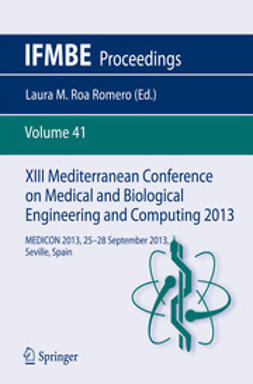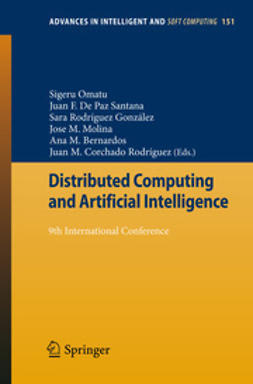Gero, John. S
Design Computing and Cognition '16
Part I. Design Synthesis
1. Reducing Information to Stimulate Design Imagination
Shiro Inoue, Paul A. Rodgers, Andy Tennant, Nick Spencer
2. Novelty, Conventionality, and Value of Invention
Yuejun He, Jianxi Luo
3. Characterizing Tangible Interaction During a Creative Combination Task
Mary Lou Maher, Lina Lee, John S. Gero, Rongrong Yu, Timothy Clausner
4. Dissecting Creativity: How Dissection Virtuality, Analogical Distance, and Product Complexity Impact Creativity and Self-Efficacy
E. M. Starkey, A. S. McKay, S. T. Hunter, S. R. Miller
Part II. Design Cognition—Design Approaches
5. What Can We Learn from Autistic People About Cognitive Abilities Essential to Design? An Exploratory Study
Andy Dong, Ann Heylighen
6. Solution-Oriented Versus Novelty-Oriented Leadership Instructions: Cognitive Effect on Creative Ideation
Hicham Ezzat, Marine Agogué, Pascal Masson, Benoit Weil
7. A Protocol Study of Cognitive Chunking in Free-Hand Sketching During Design Ideation by Novice Designers
Omar M. Galil, Kirill Martusevich, Chiradeep Sen
8. A Systematic Review of Protocol Studies on Conceptual Design Cognition
Laura Hay, Chris McTeague, Alex H. B. Duffy, Laura M. Pidgeon, Tijana Vuletic, Madeleine Grealy
Part III. Design Support
9. Is Biologically Inspired Design Domain Independent?
Ashok K. Goel, Christian Tuchez, William Hancock, Keith Frazer
10. A Meta-Analytic Approach for Uncovering Neural Activation Patterns of Sustainable Product Preference Decisions
Kosa Goucher-Lambert, Jarrod Moss, Jonathan Cagan
11. Second Guessing: Designer Classification of Problem Definition Fragments
Meghna Polimera, Mahmoud Dinar, Jami Shah
12. The Analysis and Presentation of Patents to Support Engineering Design
Gokula Vasantha, Jonathan Corney, Ross Maclachlan, Andrew Wodehouse
Part IV. Design Grammars
13. Classifications of Shape Grammars
Sara Garcia
14. From Shape Computations to Shape Decompositions
Djordje Krstic
15. Automated Induction of General Grammars for Design
Mark Whiting, Jonathan Cagan, Philip LeDuc
16. Generative Shape Design Using 3D Spatial Grammars, Simulation and Optimization
Luca Zimmermann, Tian Chen, Kristina Shea
Part V. Design Cognition—Design Behaviors
17. Comparing Two Approaches to Studying Communications in Team Design
Hao Jiang, John S. Gero
18. Individual Differences in Tendency for Design Fixation
Song Liang Lai, L. H. Shu
19. Functional Thinking: A Protocol Study to Map Modeling Behavior of Designers
Ashwinraj Thiagarajan, Apurva Patel, Steven O’Shields, Joshua D. Summers
20. To Copy or Not to Copy: The Influence of Instructions in Design Fixation Experiments
Luis A. Vasconcelos, Chih-Chun Chen, Eloise Taysom, Nathan Crilly
Part VI. Design Processes
21. A Self-Organizing Map Based Approach to Adaptive System Formation
Dizhou Lu, Yan Jin
22. Utilizing Markov Chains to Understand Operation Sequencing in Design Tasks
Christopher McComb, Jonathan Cagan, Kenneth Kotovsky
23. Designerly Pick and Place: Coding Physical Model Making to Inform Material-Based Robotic Interaction
Daniel Smithwick, David Kirsh, Larry Sass
24. Knowledge Distribution and the Effect of Design Tools on the Design Process
Mina Tahsiri, Jonathan Hale, Chantelle Niblock
Part VII. Design Synthesis
25. A Heuristic Approach for the Automated Generation of Furniture Layout Schemes in Residential Spaces
Sherif Abdelmohsen, Ayman Assem, Sherif Tarabishy, Ahmed Ibrahim
26. 3DJ: An Analytical and Generative Design System for Synthesizing High-Performance Textures from 3D Scans
Sayjel V. Patel, Mark K. M. Tam, Caitlin T. Mueller
27. Automated Best Connected Rectangular Floorplans
Krishnendra Shekhawat, José P. Duarte
28. Individual Coffee Maker Design Using Graph-Based Design Languages
Claudia Tonhäuser, Stephan Rudolph
Part VIII. Design Activity
29. Translating Analytical Descriptions of Cities into Planning and Simulation Models
Kinda Al-Sayed, Alan Penn
30. Exploring the Cognitive Dynamics of Product Appreciation
Niccolò Becattini, Gaetano Cascini, Francesca Montagna
31. A Means to Characterise and Measure the Information Processes of Engineers Using Eye Tracking
Duncan Boa, Ben Hicks
32. Personalised Specific Curiosity for Computational Design Systems
Kazjon Grace, Mary Lou Maher, David Wilson, Nadia Najjar
Part IX. Design Knowledge
33. Traversing the Barriers to Using Big Data in Understating How High School Students Design
Robin S. Adams, Molly Goldstein, Şenay Purzer, Jie Chao, Charles Xie, Saeid Nourian
34. Generalizability of Document Features for Identifying Rationale
Benjamin Rogers, Connor Justice, Tanmay Mathur, Janet E. Burge
35. The Topology of Social Influence and the Dynamics of Design Product Adoption
Somwrita Sarkar, John S. Gero
36. Using Graph Complexity Connectivity Method to Predict Information from Design Representations: A Comparative Study
C. V. Sri Ram Mohinder, Amaninder Gill, Joshua D. Summers
37. Identifying Sentiment-Dependent Product Features from Online Reviews
Dedy Suryadi, Harrison M. Kim
Nyckelord: Engineering, Engineering Design, Artificial Intelligence (incl. Robotics), Cognitive Psychology
- Utgivare
- Gero, John. S
- Utgivare
- Springer
- Utgivningsår
- 2017
- Språk
- en
- Utgåva
- 1
- Sidantal
- 14 sidor
- Kategori
- Teknologi, energi, trafik
- Format
- E-bok
- eISBN (PDF)
- 9783319449890
- Tryckt ISBN
- 978-3-319-44988-3











